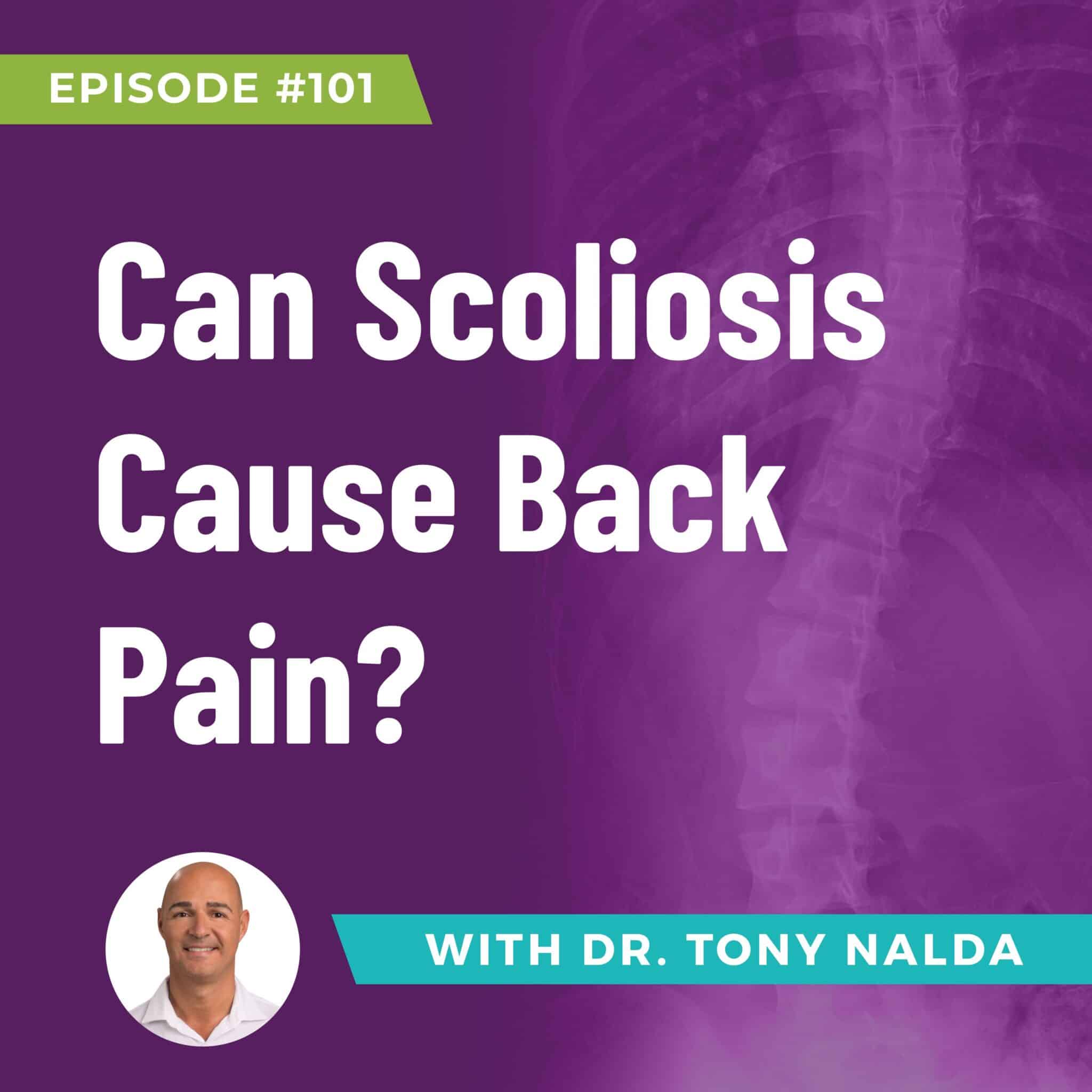Episode 101: Can Scoliosis Cause Back Pain?
In understanding scoliosis, one question often arises: Can scoliosis cause back pain? Dr. Tony Nalda, in celebration of the 100th episode of the podcast, dives deep into this topic to provide clarity and hope for those grappling with this question.
What is Scoliosis?
Scoliosis is characterized by an unnatural sideways curvature of the spine, accompanied by a rotational twist. To be classified as scoliosis, the curvature must measure 10 degrees or greater, with severity determined by the size of the Cobb angle. Scoliosis involves both the bending and twisting of the spine, distinguishing it from other spinal conditions.
Understanding Pain in Scoliosis
Contrary to common belief, scoliosis isn't inherently painful in children and adolescents during the growth phase. Instead, the main symptom is often postural deviation. However, as patients transition into adulthood, the story changes. When the growth stops, the spine becomes susceptible to compression, leading to potential pain and discomfort.
The Relationship Between Curve Progression and Pain
The progression of scoliosis, particularly in adulthood, correlates with the likelihood of experiencing pain. Smaller curves are less likely to cause problems, progress more slowly, and are associated with fewer symptoms. Therefore, addressing scoliosis early and proactively becomes crucial in mitigating potential pain in the future.
Types of Scoliosis-Related Pain
Scoliosis-related pain can manifest in various forms, including radicular pain, muscle pain, and stiffness. The location of the pain often corresponds to the site of curvature and can radiate into the extremities. Muscle imbalances exacerbate discomfort, while stiffness impedes natural fluid exchange in the spine, contributing to a sensation of being pulled.
Treatment Strategies
While traditional orthopedic approaches may adopt a "watch and wait" stance, Dr. Nalda advocates for proactive management of scoliosis, especially in its early stages. Natural conservative treatments, aimed at strengthening the body and reducing curvature, offer hope for pain alleviation without invasive interventions.
In conclusion, scoliosis can indeed cause back pain, particularly in adulthood when the spine is no longer growing and curvature progression becomes more pronounced. However, by understanding the relationship between scoliosis and pain, individuals can adopt proactive strategies to manage their condition effectively.
To know more, listen to Dr. Tony Nalda's podcast.
Artlist.io 847544
Podcast: Play in new window | Download
Subscribe: RSS
Dr. Tony Nalda
DOCTOR OF CHIROPRACTIC
After receiving an undergraduate degree in psychology and his Doctorate of Chiropractic from Life University, Dr. Nalda settled in Celebration, Florida and proceeded to build one of Central Florida’s most successful chiropractic clinics.
His experience with patients suffering from scoliosis, and the confusion and frustration they faced, led him to seek a specialty in scoliosis care. In 2006 he completed his Intensive Care Certification from CLEAR Institute, a leading scoliosis educational and certification center.
About Dr. Tony Nalda
 Ready to explore scoliosis treatment? Contact Us Now
Ready to explore scoliosis treatment? Contact Us Now








